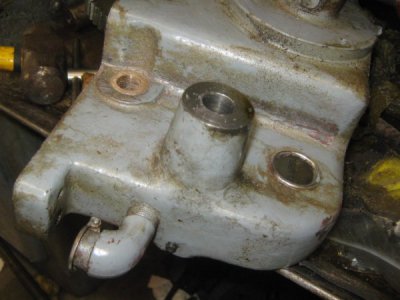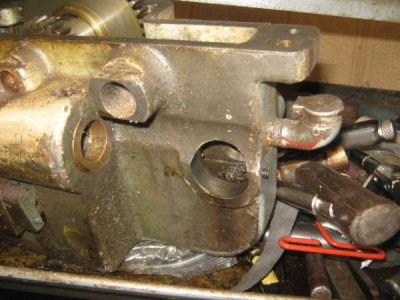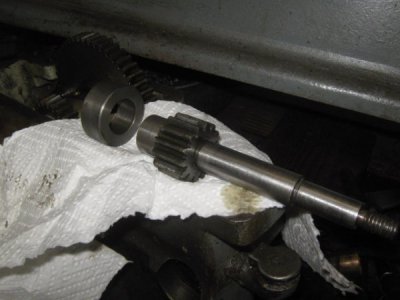Trying to tighten up the hand wheel on the carriage on my lathe. Shaft is .625 so I got some .625 x .750 bronz bearings. Back side has a 1.5 steel collar with a .875 id. Housing to be drilled is approx. 2.5". Thought I would make a temp collar for the back side with a .625 id and put a .625 rod in to try and line it up on the mill table by lining it up with a collett. Will be hard to secure it to the table. Do I drill, bore or use a end mill or do I just drill it . Started this project 2 weeks ago then had back surgery. Not to smart. Now I am going to have to get help lifting the gear box. Any other ideas on lining it up?





